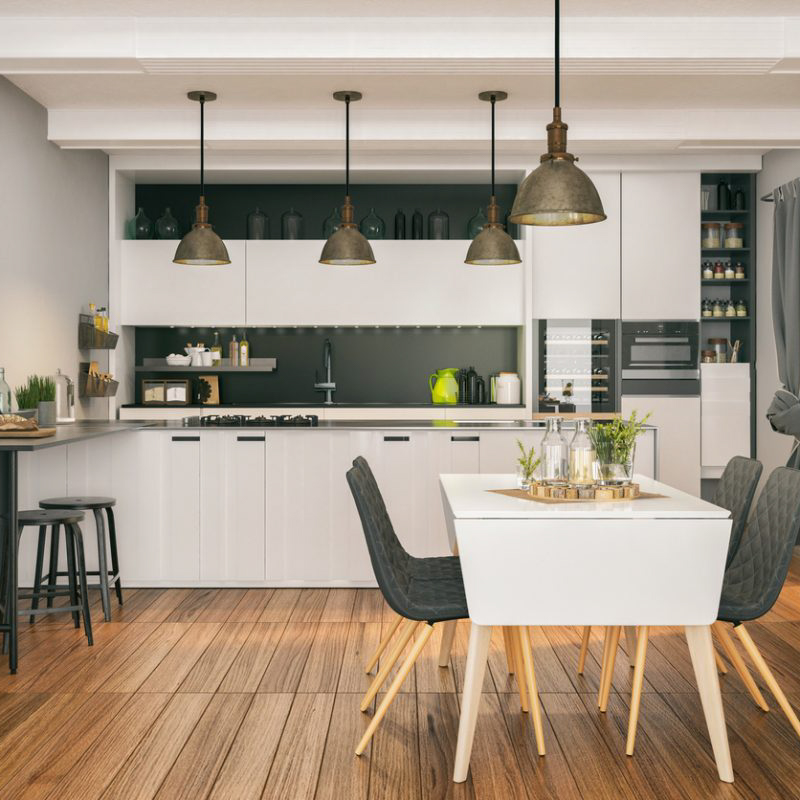
Light Up Your Dining Room: Tips and Tricks for Perfect Dining Room Lighting
The dining room is a space where families and friends gather to share meals and create lasting memories. It is a place where conversations flow, laughter fills the air, and delicious food is enjoyed. To create the perfect ambiance in your dining room, lighting plays a crucial role. Proper dining room lighting not only enhances the overall aesthetic appeal of the space but also sets the mood and creates a warm and inviting atmosphere. In this article, we will explore the importance of dining room lighting and provide tips on how to achieve optimal lighting in your dining room. Furniturei.
Key Takeaways
- Proper dining room lighting is important for creating a comfortable and inviting atmosphere.
- Choosing the right light fixtures can enhance the overall design and functionality of your dining room.
- Proper placement of dining room lighting can help to highlight key features and create a balanced look.
- Layering your dining room lighting with different types of fixtures can create a dynamic and visually appealing space.
- Using dimmers can help to set the mood and create a cozy ambiance in your dining room.
Understanding the Importance of Dining Room Lighting
Lighting is an essential element in interior design, and it can greatly impact the overall look and feel of a space. In the dining room, lighting serves two main purposes: creating ambiance and providing functionality and safety.
When it comes to creating ambiance, lighting plays a significant role in setting the mood for your dining experience. Whether you are hosting a formal dinner party or enjoying a casual family meal, the right lighting can enhance the atmosphere and make your guests feel comfortable and relaxed. Soft, warm lighting can create an intimate and cozy ambiance, while bright, cool lighting can create a more energetic and lively atmosphere.
In addition to ambiance, proper lighting is essential for functionality and safety in the dining room. Adequate lighting ensures that you can see what you are eating, preventing accidents or spills. It also allows you to properly set the table, read menus or recipes, and serve food without any difficulties. Proper lighting also helps to highlight the beauty of your dining room furniture and decor, making them stand out.
Choosing the Right Light Fixtures for Your Dining Room
When it comes to choosing light fixtures for your dining room, there are several factors to consider. The type of light fixtures you choose will depend on your personal style preferences, the size of your dining room, and the overall design aesthetic you want to achieve.
Some popular types of light fixtures for dining rooms include chandeliers, pendant lights, wall sconces, and recessed lighting. Chandeliers are a classic choice for dining rooms and can add a touch of elegance and sophistication. Pendant lights are versatile and can be used to create a focal point above the dining table. Wall sconces can provide additional lighting and add a decorative element to the walls. Recessed lighting is a more modern option that provides a clean and streamlined look.
When selecting light fixtures, it is important to consider the size and style of your dining room. A large chandelier may overpower a small dining room, while a small pendant light may get lost in a large space. It is also important to consider the height of your ceiling when choosing light fixtures. For higher ceilings, you may want to consider a longer pendant light or a chandelier with adjustable height.
Tips for Proper Placement of Dining Room Lighting
| Tips for Proper Placement of Dining Room Lighting |
|---|
| 1. Hang the chandelier or pendant light fixture 30-36 inches above the dining table. |
| 2. Use multiple light sources, such as wall sconces or table lamps, to create a layered lighting effect. |
| 3. Choose bulbs with a warm color temperature (2700-3000K) to create a cozy and inviting atmosphere. |
| 4. Install dimmer switches to adjust the lighting level according to the occasion and mood. |
| 5. Consider the size and shape of the dining room and the dining table when selecting the lighting fixtures. |
| 6. Avoid placing the light source directly above the diners’ heads, as it can create unflattering shadows. |
| 7. Use decorative lighting fixtures that complement the style and decor of the dining room. |
Proper placement of light fixtures is crucial to achieve balanced lighting throughout the dining room. When it comes to chandeliers or pendant lights, they should be centered above the dining table and hung at an appropriate height. The general rule of thumb is to hang the light fixture 30-36 inches above the table surface for an 8-foot ceiling and adjust accordingly for higher ceilings.
In addition to the main light fixture above the table, it is important to have additional sources of light in the dining room. Wall sconces can be placed on either side of a buffet or hutch to provide additional lighting and create a balanced look. Recessed lighting can be used to provide overall ambient lighting in the room.
It is also important to consider the direction of light when placing fixtures. Avoid placing fixtures directly above people’s heads, as this can create unflattering shadows. Instead, aim for indirect or diffused lighting that illuminates the entire space evenly.
Layering Your Dining Room Lighting for Maximum Impact
Layering lighting is a design technique that involves using multiple light sources to create depth and dimension in a space. In the dining room, layering lighting can have a significant impact on the overall ambiance and functionality of the space.
To achieve maximum impact with layered lighting, it is important to combine different types of light fixtures. For example, you can combine a chandelier or pendant light above the dining table with wall sconces or recessed lighting for overall ambient lighting. You can also incorporate task lighting, such as a table lamp or a floor lamp, for additional functionality.
By layering different types of light fixtures, you can create a dynamic and versatile lighting scheme that can be adjusted to suit different occasions and moods. For example, you can have bright overhead lighting for everyday meals and dimmed ambient lighting for more intimate gatherings.
Using Dimmers to Set the Mood in Your Dining Room

Dimmers are a great addition to any dining room lighting scheme as they allow you to adjust the brightness of your light fixtures and set the mood for different occasions. Dimmers give you the flexibility to create a soft and romantic ambiance or a bright and energetic atmosphere.
When selecting dimmer switches, it is important to choose ones that are compatible with the type of light fixtures you have installed. Some dimmers are specifically designed for LED lights, while others work with incandescent or halogen bulbs. It is also important to consider the wattage capacity of the dimmer switch to ensure it can handle the load of your light fixtures.
Installing dimmer switches is relatively easy and can be done by following the manufacturer’s instructions. However, if you are not comfortable working with electrical wiring, it is best to hire a professional electrician to install them for you.
Incorporating Natural Light into Your Dining Room Design
Natural light is a valuable asset in any dining room design. It not only provides a source of illumination but also brings a sense of warmth and connection to the outdoors. Incorporating natural light into your dining room design can have numerous benefits.
One of the main benefits of natural light is its ability to enhance the overall aesthetic appeal of the space. Natural light can make colors appear more vibrant and bring out the beauty of your furniture and decor. It can also create a sense of openness and spaciousness, making your dining room feel larger and more inviting.
To maximize natural light in your dining room, it is important to consider the placement and size of windows. Large windows or glass doors can bring in ample natural light and provide a beautiful view of the outdoors. If privacy is a concern, you can use sheer curtains or blinds that allow light to filter through while still maintaining privacy.
Highlighting Your Dining Room Table with Focal Lighting
The dining table is the focal point of the dining room, and it deserves special attention when it comes to lighting. Focal lighting above the dining table not only provides functional illumination but also adds a decorative element to the space.
When selecting focal lighting fixtures for your dining table, it is important to consider the size and shape of the table. A long rectangular table may require multiple pendant lights or a linear chandelier, while a round table may be better suited for a single large pendant light or a chandelier.
The height at which you hang the focal lighting fixtures is also important. As mentioned earlier, the general rule of thumb is to hang the fixture 30-36 inches above the table surface for an 8-foot ceiling. However, you can adjust this height based on personal preference and the size of your dining room.
Adding Decorative Lighting to Enhance Your Dining Room Decor
In addition to functional lighting, decorative lighting can play a significant role in enhancing your dining room decor. Decorative lighting fixtures can add a touch of elegance, style, and personality to your dining room.
When selecting decorative lighting fixtures, it is important to consider the overall design aesthetic of your dining room. If you have a traditional or formal dining room, a crystal chandelier or a vintage-inspired pendant light can add a touch of sophistication. For a more modern or contemporary dining room, sleek and minimalist light fixtures can complement the clean lines and minimalist design.
When placing decorative lighting fixtures, it is important to consider their visual impact. They should be placed in areas where they can be seen and appreciated, such as above a buffet or hutch, in a corner of the room, or as a centerpiece on a side table.
Creating a Cozy Ambiance with Warm Lighting Tones
The tone of lighting can greatly impact the ambiance and mood in your dining room. Warm lighting tones, such as soft yellows and oranges, can create a cozy and inviting atmosphere that is perfect for intimate gatherings and relaxed meals.
To create a cozy ambiance with warm lighting tones, you can use light bulbs with lower color temperatures, such as incandescent or warm white LED bulbs. These bulbs emit a soft and warm glow that can make your dining room feel warm and inviting.
It is also important to consider the color temperature of any light fixtures you choose. Light fixtures with warmer tones, such as brass or copper finishes, can enhance the warm lighting tones in your dining room.
Maintaining Your Dining Room Lighting for Long-Term Functionality
Proper maintenance of your dining room lighting is essential to ensure its long-term functionality and performance. Regular cleaning and maintenance can help extend the lifespan of your light fixtures and keep them looking their best.
To clean your light fixtures, it is important to follow the manufacturer’s instructions. For glass or crystal chandeliers or pendant lights, you can use a soft cloth or duster to remove dust and dirt. For metal fixtures, you can use a mild soap and water solution to clean any smudges or fingerprints. It is important to avoid using abrasive cleaners or harsh chemicals, as they can damage the finish of your light fixtures.
In addition to cleaning, it is important to regularly check the wiring and connections of your light fixtures to ensure they are in good working condition. If you notice any loose wires or damaged components, it is best to contact a professional electrician for repairs.
In conclusion, dining room lighting plays a crucial role in creating the perfect ambiance and setting the mood for your dining experience. Proper lighting enhances the overall aesthetic appeal of the space, provides functionality and safety, and highlights the beauty of your dining room furniture and decor.
When choosing light fixtures for your dining room, it is important to consider the size and style of your space. Proper placement of light fixtures is also crucial to achieve balanced lighting throughout the room. Layering different types of light fixtures and incorporating dimmers can further enhance the overall ambiance and versatility of your dining room lighting.
Incorporating natural light, highlighting the dining table with focal lighting, adding decorative lighting, and using warm lighting tones can all contribute to creating a cozy and inviting atmosphere in your dining room.
Lastly, proper maintenance of your dining room lighting is essential to ensure its long-term functionality and performance. Regular cleaning and maintenance can help extend the lifespan of your light fixtures and keep them looking their best.
By following these tips and considering the importance of dining room lighting, you can create a beautiful and functional space where meals are enjoyed, conversations flow, and memories are made.


